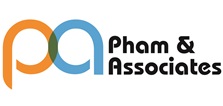The Protectability of Descriptive Signs: Analysis of the “true MILK” case in Vietnam
This article examines whether the descriptive term “true MILK” can be protected under trademark law in Vietnam. While “TH true MILK” is a widely used combined mark, “true MILK” is not used independently and was explicitly disclaimed in the original trademark registration. Relying on the principles of descriptiveness, acquired distinctiveness, and fair descriptive use, this paper argues that use of “VP true milk” by another party does not constitute trademark infringement.
1. Introduction
Descriptive signs often raise complex legal issues in trademark law. This article analyzes a dispute over the use of the phrase “true MILK” between two Vietnamese entities—one being the registered user of the combined mark “TH true MILK” and the other using “VP true milk” in a commercial context. The central legal question is whether the descriptive part “true MILK” can enjoy independent protection under the law.
2. Legal and Theoretical framework
2.1. Descriptiveness and the Scope of trademark protection
According to Article 74.2[1] of Vietnam’s IP Law, descriptive signs - those indicating product characteristics or functions - are excluded from trademark protection. This is consistent with international norms under §2(e)(1) of the U.S. Lanham Act and Article 7(1)(c) of the EU Trade Mark Regulation.
2.2. Acquired Distinctiveness and Its limits
Descriptive signs may gain protection through acquired distinctiveness, i.e., if they function as source identifiers after long-term and independent use. However, if the descriptive sign is always used in conjunction with another distinctive element, it cannot achieve independent trademark significance.
2.3. The Doctrine of Fair descriptive use
Trademark law permits fair and good-faith use of descriptive language by third parties. This rule ensures that language necessary to describe a product remains in the public domain and is not monopolized through trademark registration.
3. Case Analysis: “true MILK”
.png) 3.1. Nature of the sign
3.1. Nature of the sign
“true MILK” clearly describes the purity or authenticity of a milk product. It is not an invented term and lacks inherent distinctiveness.
3.2. Trademark registration and use
The mark “TH true MILK”[2] was registered with an express disclaimer for “true MILK”. This reflects an acknowledgment that the term is descriptive and not capable of independent protection. Moreover, “true MILK” was never used independently as a trademark.
3.3. Assessment of “VP true milk”
The term “VP true milk” serves as a descriptive indication of a milk product from another entity. It neither imitates the source-indicating function of “TH” nor misleads consumers. As such, it constitutes fair descriptive use and does not infringe upon the prior mark.
4. Conclusion
This paper concludes that “true MILK” is a purely descriptive sign that lacks protectability as a standalone mark under Vietnamese and international trademark law. The use of “VP true milk” is a legitimate, non-infringing descriptive usage. The case provides a compelling illustration of the boundaries of acquired distinctiveness and reinforces the doctrine of fair descriptive use as a safeguard against overreach in trademark enforcement./.
[1] Vietnam’s IP Law, Article 74.2: A mark shall not be considered as distinctive if falling under one of the following cases:
…c) Signs indicating the time, place, method of production, type, quantity, quality, properties, ingredients, uses, value or other characteristics that are descriptive of goods or services or signs that add significant value to goods, except where such signs have acquired distinctiveness through use prior to the filing date;
[2] Trademark Registration No.175286 issued on November 10, 2011; Trademark Owner is TH Milk Food Joint Stock Company, registration for products/services in classes 25,29,30,31,32,35,43. The trademark is protected as a whole, not separately protected "TH", "true MILK".


